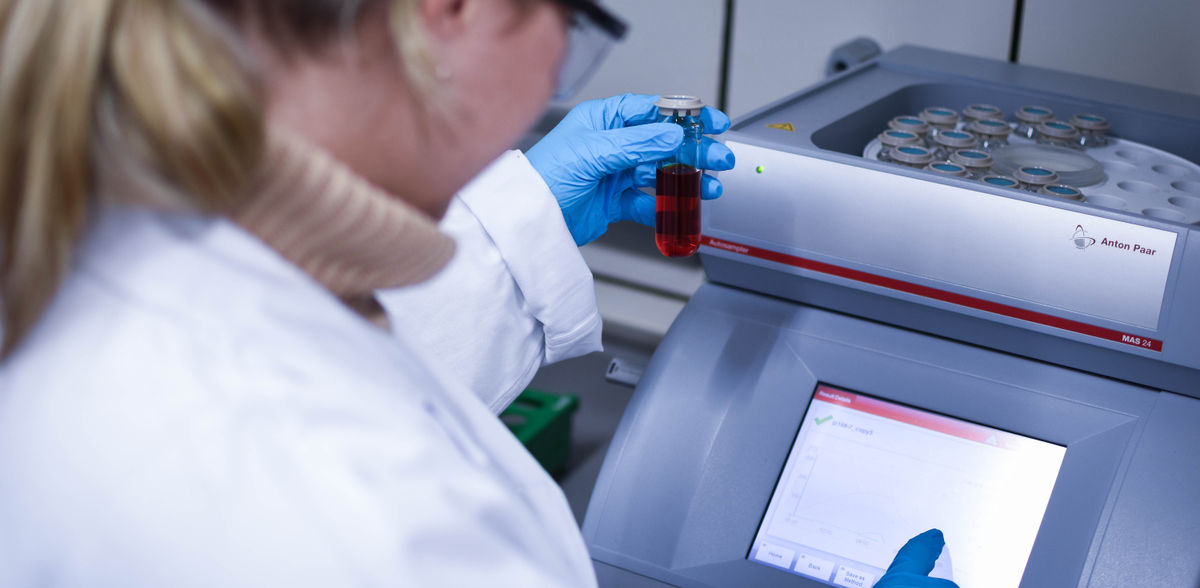Fast and energy-saving synthesis method for new electrocatalysts
Water electrolysis and the associated hydrogen production could become more energy-efficient in the future
Researchers from the Bavarian Centre for Battery Technology and the "SolTech" research network at the University of Bayreuth have presented a new production method for electrocatalysts: a fast, low-temperature synthesis of special ceramic materials (high-entropy oxides). The results from the Chair of Physical Chemistry III and the Max Planck Institute for Iron Research in Düsseldorf could make the electrolysis of water and the associated hydrogen production more energy-efficient in the future. The results have now been published in the journal Advanced Functional Materials.
Currently, electrocatalysts based on iridium or ruthenium oxide are mainly used, which significantly increases material costs and also makes large-scale expansion difficult in terms of material availability. High-entropy transition metal oxides are becoming increasingly interesting for these processes. However, these are usually obtained at high temperatures and with long synthesis times. "In this work, we present for the first time a low-temperature synthesis of high-entropy oxides, more precisely of spinels with a high iron content," reports Prof Dr Roland Marschall, holder of the Chair of Physical Chemistry III at the University of Bayreuth. The new type of synthesis in the microwave makes it possible to reduce the synthesis time to minutes (usually 5-30 minutes in this case) and the temperature to 225 °C. On the one hand, the synthesis is therefore much less energy-intensive, and on the other hand, this enables the production of nanoparticles. This is particularly interesting in catalysis, as nanoparticles have a particularly high surface-to-volume ratio and the catalytic reactions required for electrolysis take place on the surface.
"In our work, we were able to show for the first time that a wide variety of different compositions with up to seven different metals in addition to iron can be achieved with this simple low-temperature synthesis," says Prof Marschall. Partially replacing iron with cobalt, which is known for its high activity, enabled an additional increase in catalytic activity. "Finally, the activity of the catalysts depends to a large extent on the composition - but this is not freely variable in all previous synthesis methods. Our method, on the other hand, is highly flexible, which enables the incorporation of a large number of elements in different oxidation states and also allows the composition and thus the activity of the catalysts to be adjusted."
In addition to Prof Marschall, research assistants Dr Judith Zander (supported by BayBatt at the University of Bayreuth and the "SolTech" research network), Julia Petra Wölfel and Dr Morten Weiss were involved in the work. In addition, Dr Yiqun Jiang, Dr Ningyan Cheng and Dr Siyuan Zhang from the Max Planck Institute for Iron Research in Düsseldorf.
Original publication
Other news from the department science
Most read news
More news from our other portals
See the theme worlds for related content
Topic world Synthesis
Chemical synthesis is at the heart of modern chemistry and enables the targeted production of molecules with specific properties. By combining starting materials in defined reaction conditions, chemists can create a wide range of compounds, from simple molecules to complex active ingredients.

Topic world Synthesis
Chemical synthesis is at the heart of modern chemistry and enables the targeted production of molecules with specific properties. By combining starting materials in defined reaction conditions, chemists can create a wide range of compounds, from simple molecules to complex active ingredients.






























































